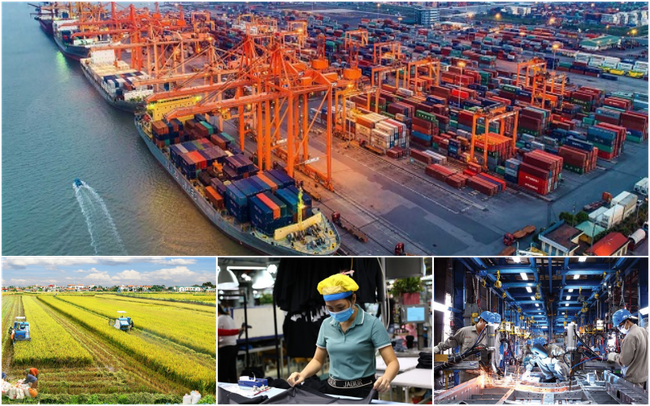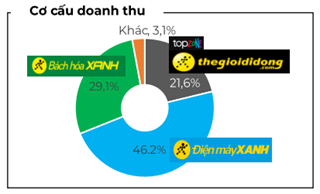Supply-side economics emphasizes the importance of supply in economic development and growth based on market mechanisms, considering it as an efficient allocation mechanism among social resources.
The supply-side economic model has been effectively applied in many developed countries. For Vietnam, it is necessary to implement a comprehensive set of solutions to promote the rapid and sustainable development of our economy, in which the improvement of financial policies and laws plays an important role.
TS. Ho Duc Phoc – Minister of Finance – has pointed out the experiences in some countries applying the supply-side economic model, as well as solutions for Vietnam’s economy:
Supply-side economics model and experiences in some countries
In the mid-1970s, the term “supply-side economics” emerged in contrast to Keynesian demand-side policies.
Supply-side economics emphasizes the importance of supply in economic development and growth based on market mechanisms, considering it as an efficient allocation mechanism among social resources.
The supply-side economic model revolves around encouraging producers to expand in scale, promoting production development, increasing labor productivity, increasing the market orientation of the economy, reducing state intervention in the market, removing investment barriers, implementing social welfare program reforms, and encouraging investment in the provision of public goods.

TS. Ho Duc Phoc – Minister of Finance
The supply-side economic model has been effectively applied in the UK, the US, France, and South Korea from the 1970s to 2009.
After the COVID-19 pandemic, the global economy faces many risks of recession and reduced resources, demanding fast and sustainable economic growth. With the modern supply-side economic model (Modern Supply Side Economics – MSSE), the US has actively implemented the supply-side economic model by investing heavily in infrastructure such as roads, railways, telecommunications, seaports, ICT, clean energy, science and technology investment, and improving the quality of human resources and education.
The growth results of GDP in 2023 in the US are relatively stable; Q1, Q2: 2.1%; Q3, Q4: 5.2% higher than the forecasted level of 5% or China’s.
In China, at the end of 2015, the country focused on restructuring the supply side, focusing on production, increasing labor productivity, and improving technology.
In 2016, China closed down outdated steel mills and coal mines, reduced inventories, issued tax incentives, and developed enterprises, applying advanced technology in energy, transportation, and industrial production.
Some new products such as electric cars, wind turbines, aerospace equipment, semiconductors, construction technologies for elevated roads and high-rise buildings, high-speed railways… These policies have made China the world’s second-largest economy.
Improving financial policies and laws to promote the rapid and sustainable development of our economy
Based on the experiences of other countries in the world, Vietnam needs to implement a comprehensive set of solutions to promote rapid and sustainable development of our economy, in which the improvement of financial policies and laws plays an important role. The focus and group of solutions are as follows:
First, reasonable and effective financial policy management and operation: It is necessary to improve the coordinated tax policies (value-added tax, corporate income tax, special consumption tax, import-export tax, personal income tax, property tax, etc.) linking the structure of the budget revenue with the central budget being the main budget, increasing the proactive nature of the local budget.
Especially, pay attention to tax incentives for projects applying advanced technology, innovative projects, high technology, renewable energy, clean energy; support the development of startup enterprises, enterprises applying advanced technology for development.
Priority investment resources to develop infrastructure, focusing on road transport infrastructure, high-speed railways, modern seaports, customs associated with smart customs, logistics; develop high-tech industries, digital transformation, high-quality human resources development, education, healthcare, and social welfare.
Second, build and manage a transparent, proper, and sustainable financial market: Focus on developing strong, transparent, sustainable, stable financial markets and becoming internationally interconnected capital markets to mobilize low-interest-rate, long-term capital sources for fast, effective development of domestic projects from banks, international financial funds for domestic projects to promote economic development.

According to Ho Duc Phoc, Minister of Finance, the improvement of financial policies and laws plays an important role
Third, restructuring state-owned enterprises (SOEs) while developing private enterprises toward effectiveness and increasing capacity for the economy. Amend the Law on the Management and Use of State Capital Invested in Production and Business at Enterprises and related laws, creating a favorable and fair investment environment, transparency among enterprises, without discrimination.
Enhance effective capital investment into SOEs and state commercial banks to innovate technology, increase labor productivity, enhance the competitiveness of enterprises. Actively carry out equitization, divestment of state capital in state-owned enterprises to attract private investment in managing and developing more efficient state-owned enterprises.
Create a favorable business investment environment to attract investment, help joint-stock companies, private enterprises develop, access to scientific and technological advances, attract high-quality human resources, effectively applied capital sources for efficient business production. Encourage enterprises to use clean raw materials, clean energy, clear origin, exploit resources efficiently, apply high technology to produce high-quality products, increase value, and promote exports.
Fourth, improve the quality of training young human resources to create a high-quality human resource pool, attract talents to meet the labor force for industrialization and modernization.
Fifth, improve policies, especially financial policies, to develop infrastructure, especially clean energy infrastructure, modern transportation infrastructure, climate change adaptation infrastructures, information technology infrastructure…
Promote creativity, apply modern science and technology, increase labor productivity, encourage enterprises to develop, increase capacity, and develop high-quality human resources.





































